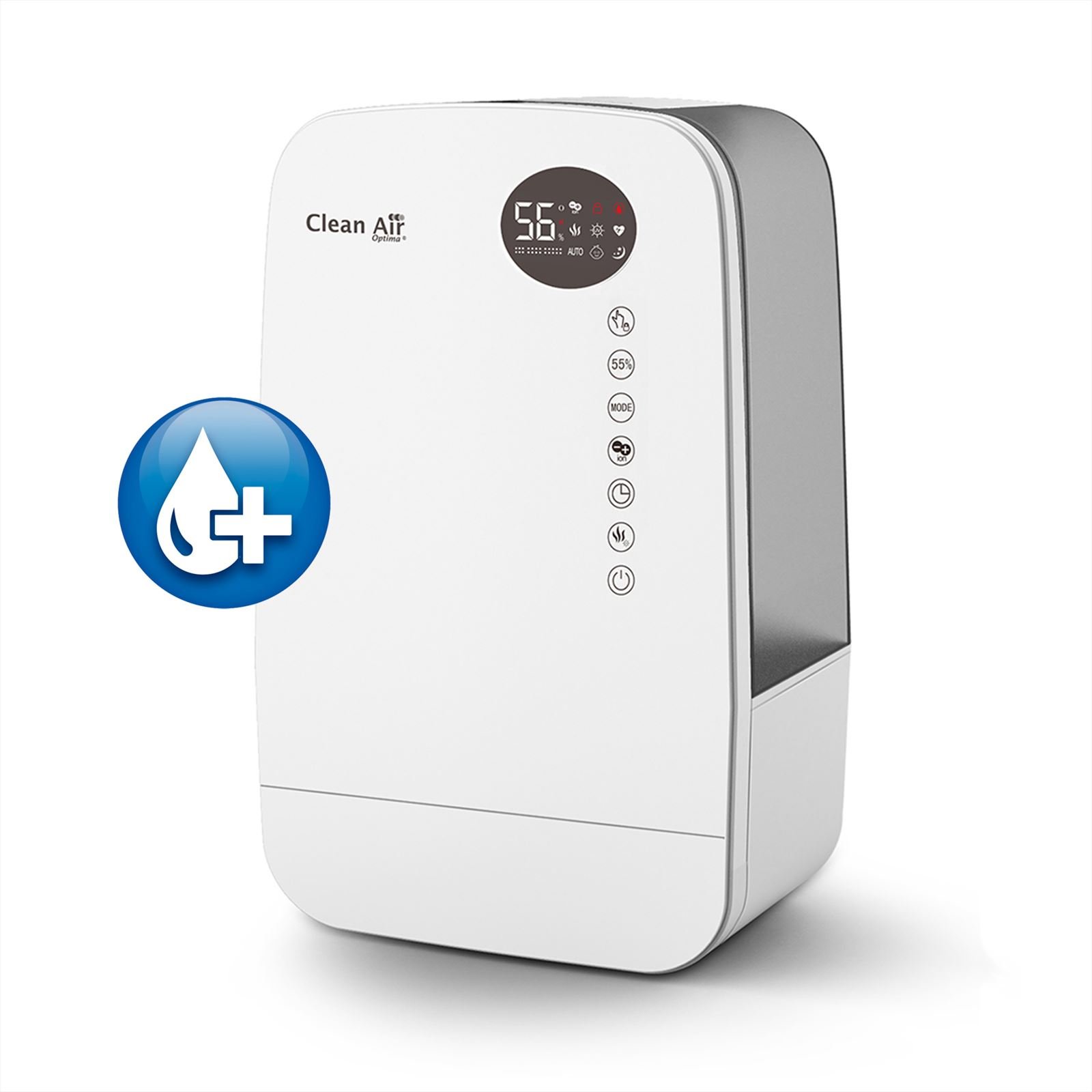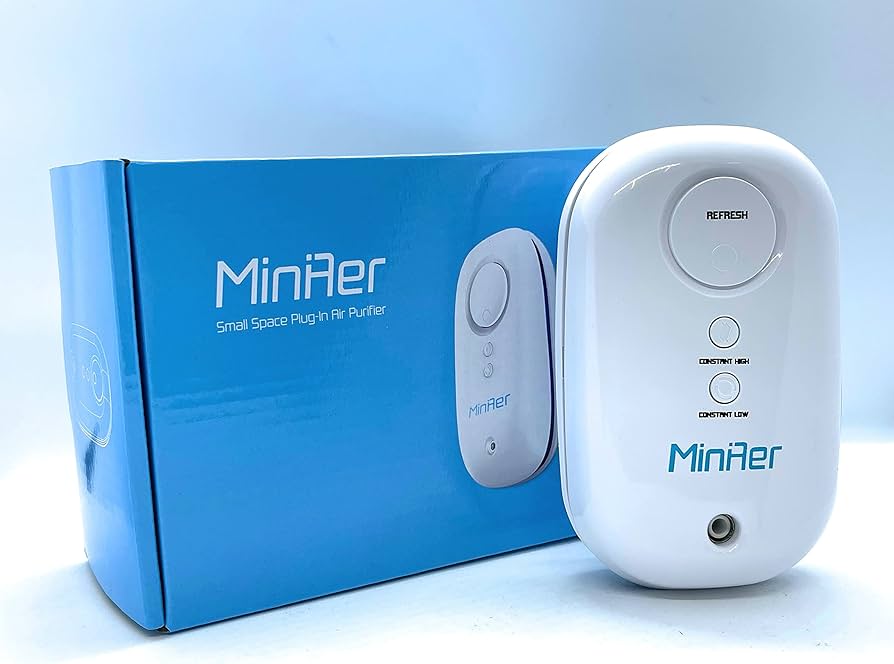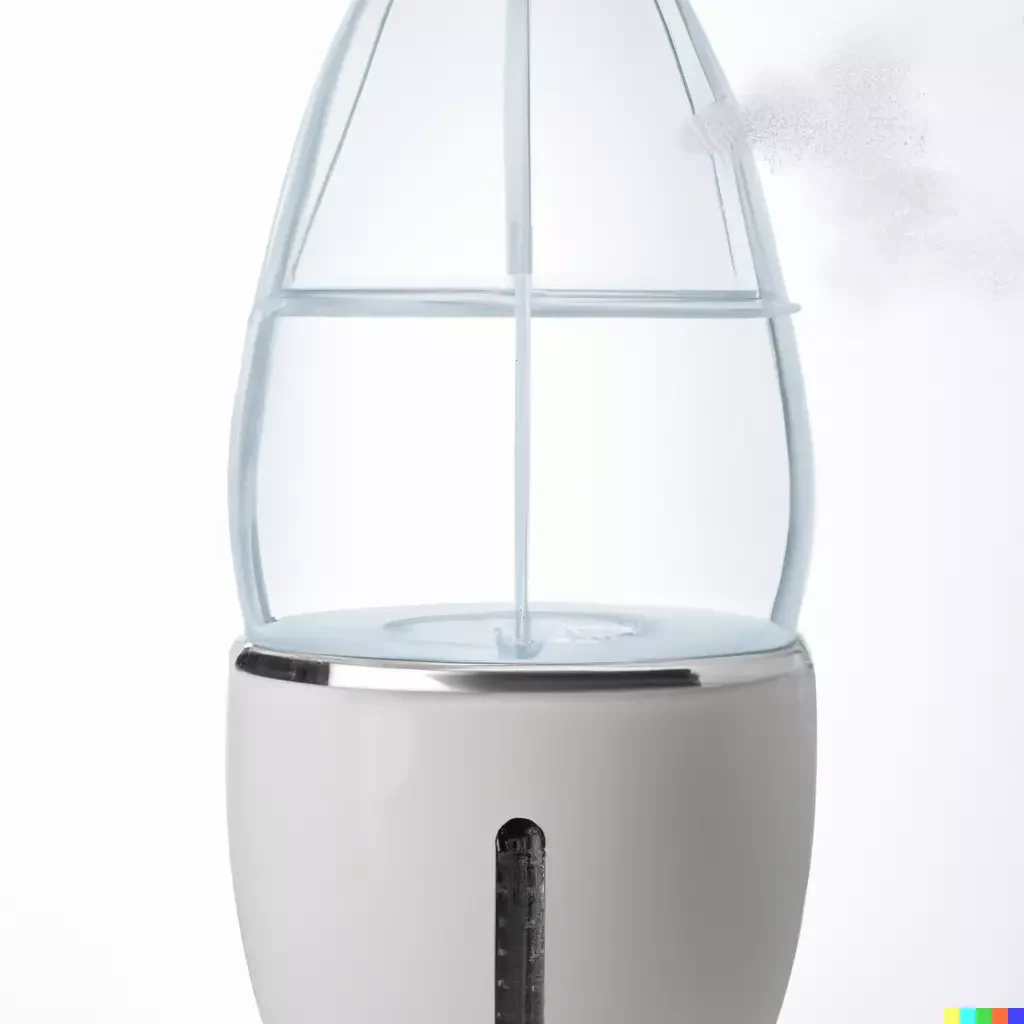Yes, a humidifier can potentially damage electronics if moisture accumulates excessively. High humidity levels increase the risk of condensation on electronic devices.
Humidifiers play a pivotal role in maintaining indoor comfort, especially during dry winter months or in arid climates. By emitting water vapor into the air, they help alleviate problems associated with dryness, such as respiratory discomfort and skin irritation. However, maintaining an appropriate humidity level is crucial to safeguard electronic devices.
Gadgets and appliances, from smartphones to televisions, are sensitive to moisture. Excessive humidity can lead to the formation of condensation which, in turn, can cause short circuits or corrosion within electronic components. Balancing the benefits of a humidifier with the protection of sensitive electronics involves careful attention to humidity levels, ideally keeping them within a safe range of 30-50%. This way, homeowners and office users can enjoy the comfort humidifiers provide while ensuring their electronic investments remain secure from unnecessary moisture damage.
Humidifier Risks To Electronics
While humidifiers improve air quality and comfort, they pose a less known hazard to our beloved gadgets. Electronics are sensitive; even a slight rise in humidity levels can lead to untoward reactions. With a clearer understanding of humidity’s effect on electronic devices, short-term malfunctions versus long-term damages, and the particular types of electronic devices at risk, you can protect your tech while enjoying the benefits of a humidifier.
Understanding Humidity’s Effect On Electronic Devices
Moisture and electronics make for a tricky combination. High humidity can promote condensation, leading to water droplets that may short-circuit critical components. Over time, persistent moisture can accelerate wear and tear, corroding circuit boards and other electronic internals, and hindering device performance.
Short-term Malfunctions Vs. Long-term Damages
Electronics exposed to elevated humidity levels may experience immediate malfunctions, such as glitching or rebooting. While these symptoms can be temporary, they signal potential long-term damages. Continued exposure to humidity can deteriorate soldering and cause irreversible harm to the device’s internal parts, leading to costly repairs or the need for complete replacement.
Types Of Electronic Devices At Risk
- Computers and Laptops: They contain intricate circuitry that can easily succumb to corrosion due to humidity.
- Smartphones and Tablets: High moisture can damage their sensitive touchscreens and internal components.
- Home Entertainment Systems: TV screens, sound systems, and consoles are vulnerable to damp air, which can cause short circuits and component failure.
- Photography Equipment: Cameras and lenses are precision devices, and humidity can cause mold growth on lenses and damage sensitive electronics within the camera body.
Identifying Signs Of Humidity Damage
As we integrate electronics into almost every aspect of daily life, it’s essential to understand that the environment around these devices can affect their functionality and longevity. Humidifiers, often used to alleviate the discomforts of dry air, can inadvertently introduce a new hazard to your valued electronics. Recognizing the early signs of humidity damage is critical in protecting your investments. Let’s delve into the physical symptoms and electronic behavior irregularities that indicate humidity may be impacting your devices.
Physical Symptoms On Devices
Devices often bear the brunt of excessive humidity silently. Look for these unmistakable signs:
- Condensation: Water droplets on the external or internal components of the device signal high moisture levels.
- Corrosion: Rust or discoloration, particularly on metal contacts and solder joints.
- Warping: Excess humidity can make device casings expand and contract, causing physical distortion.
Spotting these symptoms early can prevent permanent damage. Regular checks, especially if you use a humidifier, can go a long way in safeguarding your electronics.
Electronic Behavior Irregularities
Erratic operation may be the first red flag that your electronics are suffering from humidity exposure. Freak glitches should prompt immediate investigation:
- Unexplained malfunctions: Devices turning on or off on their own could be reacting to internal moisture.
- Touchscreen issues: Erratic responses from touch panels might result from moisture-laden interfaces.
- Inconsistent performance: Fluctuations in device output or signal quality may be humidity induced.
- Data errors: Corrupted files and hard disk errors can also be symptoms of electronic humidity damage.
Consistent monitoring and maintaining an optimal humidity level will minimize risks and maintain your devices’ performance.
Safe Humidity Levels For Gadgets
Understanding and maintaining the right humidity levels is crucial for the longevity of electronic devices. Excess moisture in the air can lead to condensation, which may cause corrosion and short circuits in sensitive electronic components, potentially damaging your gadgets beyond repair. Let’s delve into what constitutes a safe environment for your electronics when it comes to humidity.
Ideal Indoor Humidity Range
Creating a balance in indoor humidity is key to protecting electronic devices. The ideal humidity range for electronics is generally between 30% and 50%. This range minimizes the risk of static electricity, which can be harmful to electronic circuitry, and also prevents the formation of condensation.
- Keep humidity below 50% to deter the growth of mold and mildew, which could potentially infiltrate and damage your gadgets.
- Ensure humidity stays above 30% to avoid dry air, which can lead to static discharges that can disrupt or even destroy electronic circuits.
Constantly high levels of humidity can accelerate wear and tear on your devices, so paying close attention to the humidity in your space is essential for the health of your electronics.
Tools For Monitoring Humidity Levels
Keeping tabs on the moisture content in your home or office doesn’t have to be complicated. Various humidity monitoring tools can help ensure your environment stays within the safe zone for your electronics.
- Hygrometers: An invaluable tool that measures the amount of moisture in the air. Digital hygrometers offer precise readings and can sometimes come integrated into other home devices.
- Smart Home Systems: These systems can monitor and adjust the humidity levels automatically, keeping your electronics safe without manual intervention.
- Humidity Sensor Switches: These switches can activate dehumidifiers or humidifiers in response to the detected humidity levels, maintaining optimal conditions for gadget safety.
Regularly monitoring the humidity with these tools can prevent the silent but steady damage that high moisture levels can inflict on your electronics. Be proactive and safeguard your investments by ensuring your indoor climate stays gadget-friendly!
Can A Humidifier Damage Electronics? Precautions
The convenience and comfort a humidifier brings to a dry environment can’t be understated, especially during those harsh winter months or in arid regions. However, it’s critical to understand that the very moisture emitted from humidifiers, while good for our skin and respiratory systems, could potentially harm electronic devices. In this segment, we’ll explore various precautions to ensure your electronics stay safe while you maintain a comfortable humidity level in your room or office.
Choosing The Right Humidifier Type
Not all humidifiers are created equal, and understanding the types that are kinder to electronics is vital. Ultrasonic and evaporative humidifiers are generally more favorable for environments with electronics, as they produce a less aggressive moisture output. Consider the following types:
- Ultrasonic Humidifiers: These use high-frequency vibrations to emit a fine mist. Always opt for models with built-in hygrometers for better humidity control.
- Evaporative Humidifiers: These pull air through a wet wick filter, which means no white dust or over-humidification, thus reducing risk to electronics.
Best Practices For Humidifier Placement
Where you place your humidifier significantly impacts the potential risk to electronics. Keep the following tips in mind:
- Position humidifiers at least 3 to 5 feet away from any electronic devices.
- Avoid placing the humidifier directly on wood or carpet that could become damp and damage electronics sitting on these surfaces.
- Use a humidity monitor to keep levels in the ideal 30-50% range.
Tips For Maintaining Optimal Humidity
Consistent, proper maintenance of both your humidifier and the humidity levels in your environment ensure that your electronics can coexist with additional moisture without incident. Here are some expert tips to maintain optimal humidity:
| Tip | Description |
|---|---|
| Monitor Humidity Levels | Utilize a hygrometer to track the humidity levels in your room. This way, you can adjust your humidifier settings accordingly. |
| Regular Cleaning | Clean your humidifier regularly to prevent mould and bacteria build-up, which could affect its performance and humidity output. |
| Replace Filters | If your humidifier uses filters, change them as recommended by the manufacturer to prevent excess moisture and mineral buildup. |
Safeguard Your Gadgets From Moisture
Electronics and moisture usually don’t mix, and for good reason. The presence of excess humidity can be a deadly cocktail for your electronic devices, potentially leading to shortened lifespans, operational failures, or even catastrophic damage. Safeguarding your gadgets from moisture should be a priority, especially if a humidifier is part of your home or office setting. Let’s explore various methods to protect your cherished electronic items from the damp clutches of humidity.
Protective Covers And Cases
Using protective covers and cases is one of the simplest yet most effective ways to shield your electronics from moisture. These accessories are designed to provide a barrier against environmental factors, including humidity. Ensure to select high-quality cases that boast waterproof or at least water-resistant features.
- Choose airtight covers for devices that aren’t in use often.
- Opt for cases with built-in silica gel packets for moisture absorption.
- Invest in heavy-duty cases for high-value electronics that need extra protection.
Utilizing Dehumidifiers In High-risk Areas
In areas where humidity levels are notoriously high, integrating dehumidifiers can make a substantial difference. These devices actively reduce moisture in the air, thereby creating a safe environment for your electronics. Consider placing a dehumidifier in rooms where you store important gadgets to actively ward off potential moisture-related damage.
| Room | Recommended Dehumidifier Type |
|---|---|
| Home Office | Compact, quiet operation models |
| Basement | Larger capacity, high-efficiency units |
| Living Spaces | Portable, with humidity level controls |
Periodic Maintenance Routines
Adopting a routine maintenance schedule for your electronics helps in keeping them dry and functional. Moisture can accumulate over time, even with preventative measures, so regular check-ups are crucial. Below are steps to include in your maintenance routine:
- Visual inspection: Regularly check for signs of moisture ingress or condensation.
- Cleaning: Use a dry cloth to wipe down your devices, removing any dust or moisture.
- Internal Dry-Out: Occasionally open up devices that can be safely disassembled to air them out.
- Professional Servicing: For high-end electronics, schedule annual servicing with a professional to ensure internal components are moisture-free.
Recovering Humidity-affected Electronics
Dealing with electronics that have been exposed to high levels of humidity can be tricky and, if not handled properly, potentially lead to permanent damage. It’s crucial to address excess moisture quickly, as water vapor can corrode circuitry and disrupt delicate internal components of electronic devices. Here’s a guide to Recovering Humidity-Affected Electronics, designed to help you take swift and effective action in safeguarding and potentially rescuing your valuable gadgets.
Initial Steps After Exposure To High Humidity
When you discover your electronics have been compromised by high humidity, time is of the essence. Start by following these steps:
- Unplug the device immediately to prevent electrical shorts.
- Remove any batteries or external power sources.
- Avoid the urge to turn on the device to check its functionality.
- Disassemble the device as much as you’re comfortable with to expose internal components.
- Wipe down all accessible surfaces with a dry, lint-free cloth.
- Place the device in a dry, well-ventilated area. Consider using desiccants like silica gel packets to absorb moisture.
- Allow the device to dry thoroughly for at least 24-48 hours before attempting to power it back on.
When To Seek Professional Repair Services
If you’ve followed the initial steps and your device still shows signs of malfunction, or if you’re not comfortable disassembling your electronics, professional repair services may be necessary. Look for these signs:
- Presence of condensation under screens or inside the camera lenses.
- Corrosion or discoloration on any of the circuits.
- Signs of electrical shorts, such as a burnt smell or smoke.
- Persistent error messages or failure to power on entirely.
Qualified technicians have the expertise and tools needed to safely dry out and repair humidity-damaged electronics. They can also assess the extent of the damage more accurately.
The Role Of Warranties And Insurance
Before sending your device for repair, check the manufacturer’s warranty or your electronics insurance policy. Many warranties do not cover water or humidity damage, but it’s worth investigating as some might. Insurance policies may offer coverage for such damages, potentially saving you from bearing the full cost of repairs or replacements. Keep in mind the following:
| Warranty Type | Coverage for Humidity Damage |
|---|---|
| Manufacturer’s Warranty | Typically does not cover, but exceptions exist |
| Extended Warranty/Protection Plan | May cover, depending on the terms |
| Homeowner’s/Renter’s Insurance | Often covers, check your policy |
Document the damage thoroughly with photographs as evidence for warranty or insurance claims. This will support your case and simplify the process of filing a claim.

Credit: www.cleanairoptima.com
Frequently Asked Questions On Can A Humidifier Damage Electronics
Can Humidifiers Harm Your Electronic Devices?
Humidifiers can potentially cause harm to electronic devices if used improperly. Excessive humidity can lead to moisture buildup, which might damage internal components. It’s important to maintain a proper humidity level, generally between 30% to 50%, to avoid such damage.
What’s The Safe Distance For Electronics From A Humidifier?
It’s advised to keep electronics at least a few feet away from a humidifier. This distance helps prevent any moisture from reaching and accumulating on the devices. Generally, a safe distance is about 3 to 5 feet, ensuring electronics stay dry and functional.
Do Humidifiers Cause Short-circuits In Electronics?
Humidifiers can increase the risk of short-circuits in electronics if moisture accumulates or condenses on electrical circuits. To avoid this risk, use a hygrometer to monitor room humidity and ensure it stays within safe levels.
How To Protect Electronics From Humidifier Damage?
To ensure the protection of electronics from potential humidifier damage:
1. Use a humidity controller. 2. Place humidifiers well away from electronics. 3. Regularly maintain your humidifier to prevent excessive moisture output.
Conclusion
To summarize, a humidifier presents both benefits and risks. It’s vital to maintain optimal humidity to protect your gadgets. By carefully managing device placement and monitoring moisture levels, you can enjoy the comfort a humidifier offers without compromising your electronics’ integrity.
Stay vigilant and your tech will stay safe.





